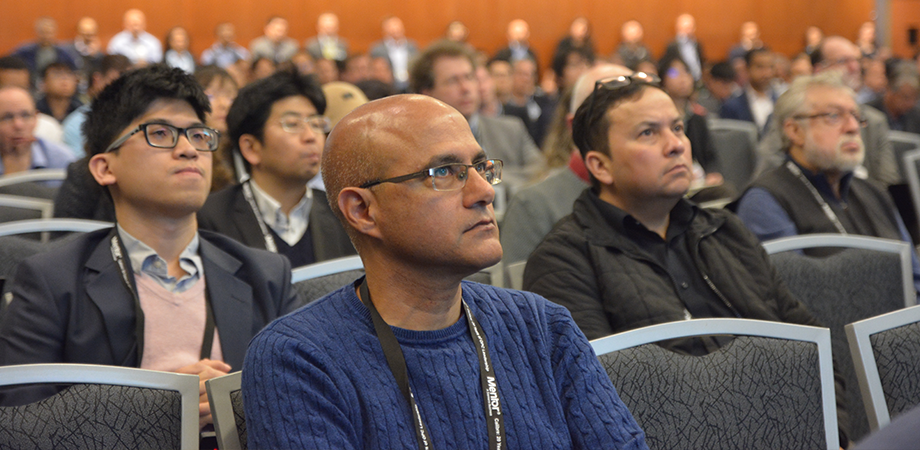Extreme Ultraviolet Lithography Is – Finally – Ready

At SPIE Advanced Lithography 2019, speakers on Monday, 25 February noted that EUVL, or extreme ultraviolet lithography, was finally ready for production. This is years after originally planned. However, the capabilities of EUV single patterning may soon be surpassed by the resolution needs of some semiconductor metal layers.
There have significant advances in EUV lithography, said Bernd Geh, a senior principal scientist at Carl Zeiss, in a keynote speech. Geh noted that a high-end camera lens has about a 200 nm RMS deviation from an ideal shape. The optics in semiconductor lithography are much, much better, as shown by essentially 0 RMS deviation number.
That is also true for current EUV optics. "It's roughly 0.05 nm for a single mirror surface accuracy," Geh said.
These and other advances, like EUV steppers that have a high enough throughput to be practical, are important. The ability to create patterns on a wafer is tied to the wavelength of the light. At 13.5 nm wavelength, EUV is a significantly shorter wavelength than the current 193-nm lithography technology. So, an EUV stepper should make it possible to pattern the most exacting layers of a 7-nm node semiconductor in a single pass. Today, the most advanced semiconductors have larger features than this, and their most demanding layers are lithographically printed using multiple passes through 193-nm steppers.
EUVL is still maturing as a technology, with progress being made on sources, masks, resists, and more. In discussing how much room there is to improve, Geh did a rough calculation of a theoretical limit arising from photon count fluctuations. At the microscopic scale of semiconductor manufacturing, the discrete nature of photons becomes apparent, with the number of photons interacting with the resist varying over time. This stochastic variation leads to such things as rough-edged or bridging lines, missing contact holes and other problems.
One way to put this is that the coefficient, labeled k4, in a resolution formula should, based on photon statistics, be about 0.75. The observed value is somewhere between 4 and 8, indicating that resist, etch, and other aspects of processing can be further perfected.
The challenge, Geh said in a post-talk Q&A, is to "use those photons you absorb more efficiently than we do today."
In his keynote, Ryoung-Han Kim, a group manager of design automation at IMEC, said that EUVL will first be used for metal and metal contact, or via layers. Kim pointed out that the steady shrinking of semiconductor features has slowed for some layers. However, metal and via layers have continued to get smaller at the same constant pace, which means that these layers need the resolution that EUV allows. Kim cautioned, though, that the requirements may be such that within a few years multiple EUV passes will be necessary for the tightest metal design rules.
As for why EUVL is necessary, one reason is an exponential increase in data traffic, with volume growing by several-fold every few years. This can be handled by increasing the number of servers, chips in a server, or transistors in a chip. The last is the most cost-effective, which is why EUVL rollout is critical. There also must be innovations in chips designs and other areas, according to Kim, as a combination of advances enhances the impact of each.
This data deluge looks to be even greater in the years to come. "With the arrival of 5G, this [data traffic] might explode, and grow even faster," Kim said.
Hank Hogan is a science writer based in Reno, Nevada.
See more news and highlights from SPIE Advanced Lithography.
| Enjoy this article? Get similar news in your inbox |
|



